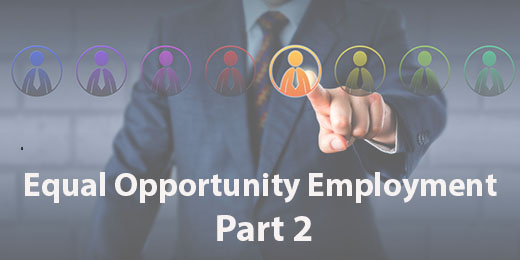EEO-1 Component 2 Filing - What Employers Need To Know

Statistics showing that women get paid 70 cents of the dollar that men earn for the same work, the EEOC embarked on a pay equity initiative to try to quantify and correct this pay inequity. That sprung EEO-1 component 2 reporting obligations on employers.
The spirit of the law was to correct this appearance of gender discrimination. However, this new EEO-1 Component 2 reporting obligation failed to roll out smoothly and resulted in the complete confusion of all HR Practitioners across the nation. Since the immediate legal challenges and political party change right after the law passed, most expected the rule to be rescinded after the 2016 presidential election. When President Trump finally appointed a new EEOC chair everyone expected that the component 2 requirements would be eliminated. Instead they announced the portal for filing being opened.
The initial deadline to submit EEO-1 Component 2 pay data was Monday, September 30, 2019. But the agency announced Sept. 27 that it will continue to accept reports until it reaches the target response rate identified in a court order. With that announcement employers have decided to wait for the reporting period to close without filing component 2. Since there is no fine or penalty for not filing component report, the administrative and time consuming burden would outweigh the incentive to comply.
What are employers obligations for EEO-1 Component 2?
Employers, including federal contractors, that have 100 or more employees are required to file component 2 data for 2017 and 2018. Component 2 asks for employees:
- race/ethnicity and gender data
- Box 1 of your W-2 reports for 2017 and 2018.
- hours worked for both exempt and non exempt employees
- pay and hours data into the 10 EEO-1 job categories by race/ethnicity and gender
Employers have serious concerns about EEO-1 Component 2.
On a further analysis employers and business groups have found several flaws with component 2.
Box 1 W-2 income
This is not always a calculation of total pay. Box 1 excludes Employee 401k complications which would cause the appearance of reduced pay, even though contribution amounts are the choice of the individual. If the female elects a higher contribution of her wages, but a male does not, box 4 could illustrate the female being paid less. If the data you are gathering is not a complete picture how can an analysis of pay equality be performed?
Total hours for exempt employees
Hours for exempt employees is problematic as most employers do not track hours worked intentionally to avoid jeopardizing the positions proper exemption. Two options remain for employers then. 2,080 hours (i.e., 40 hours a week) for full-time employees or 1,040 hours (i.e., 20 hours a week) for part time. There’s no allowance for part-timers who may work more or less than 20 hours a week. Your choice by default will be 1,040 hours regardless of the schedule they work, which is bound to skew the analysis when you factor in their salaries, which necessarily are influenced by the schedules and the amount of time they work.
Partial year Salaries
There is no prorating for individuals who did not complete year. Partial year salaries have the opportunity to appear like inequality of pay, when it was merely for a shorter duration than the complete year. For example, you’ll report 2,080 hours for a full-time exempt employee you hired in December to go with one month or less of pay reported on his or her W-2.
OnePoint HCM Support full EEO-1 Component 1 & 2 filing
Most employers hope to return to the normal EEO-1 filing process in 2020. Regardless of the back and forth on the employer requirements OnePoint is ready to support the filing of EEO-1 component 1 & 2. EEO-1 Component 1 has always been a standard report for clients. But during the summer of 2019 the Component 2 data fields had been added and the full EEO-1 is available for clients that wanted to file.
OnePoint is ready to support EEO-1 filing:
- Self-service tools to simplify the collection data points like gender and race onto their employee record.
- All data points required for the EEO-1 report are built into the report platform.
- The system can populating the form with the formatting required for electronic filing.
- Ongoing audit reports for accuracy
.
Contact OnePoint HCM and discover how our unified HCM platform simplifies HR reporting and compliance management for your organization.
Subscribe to updates
Get the latest posts delivered to your inbox.